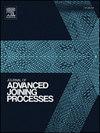Measurement of residual stress due to deformation caused by slight hydroforming deformation process in double-walled pipes through external pressure
IF 4
Q2 MATERIALS SCIENCE, MULTIDISCIPLINARY
引用次数: 0
Abstract
In this study, the measurement of residual stress due to deformation caused by slight hydroforming deformation process in double-walled pipes through external pressure was studied. Residual stresses were measured by nanoindentation of ST52 steel/GGG70 iron double-walled pipes. The results showed that the highest compressive residual stress was created on the inner surface of the GGG70 with effective parameters of pressure of 146 tons, the temperature of 73 °C, and percentage of Al₂O₃ nanoparticles powder in fluid of 5.6 %. Repeated nanoindentation measurements on the reference (stress-free) sample showed a variation of approximately 10 %, indicating acceptable repeatability of the method. The stresses are almost uniform and the same along the length of the part, and only very slight changes are observed in the part's initial part. The stress in the outer wall is obtained at the outer surface of ∼ 502.6 MPa and the inner surface of 506.6 MPa. Considering that the yield stress of the outer wall is considered to be ∼ 500 MPa, the entire outer wall is in a plastic state but has undergone a good amount of plastic deformation. Residual stresses are initially tensile and then reach their maximum value and with increasing depth, they are converted into compressive residual stresses and then reach an equilibrium state in the base metal. With increasing depth, there is not much change in the maximum tensile residual stress.
测量外压作用下双壁管中微液压成形变形过程中产生的残余应力
本文研究了外压作用下双壁管材微液压成形过程中变形残余应力的测量。采用纳米压痕法测量了ST52钢/GGG70铁双壁管的残余应力。结果表明:在压力为146 t、温度为73℃、Al₂O₃纳米颗粒粉末在流体中的含量为5.6%的条件下,GGG70的内表面产生的压缩残余应力最大;在参考(无应力)样品上重复的纳米压痕测量显示出大约10%的变化,表明该方法的可重复性是可接受的。应力沿零件的长度几乎是均匀的,只有在零件的初始部分观察到非常微小的变化。外壁应力在外表面为~ 502.6 MPa,内表面为506.6 MPa。考虑外壁屈服应力为~ 500 MPa,整个外壁处于塑性状态,但发生了较好的塑性变形。残余应力最初是拉伸的,然后达到最大值,随着深度的增加,它们转化为压残余应力,然后在母材中达到平衡状态。随着深度的增加,最大拉伸残余应力变化不大。
本文章由计算机程序翻译,如有差异,请以英文原文为准。
求助全文
约1分钟内获得全文
求助全文

 求助内容:
求助内容: 应助结果提醒方式:
应助结果提醒方式:


